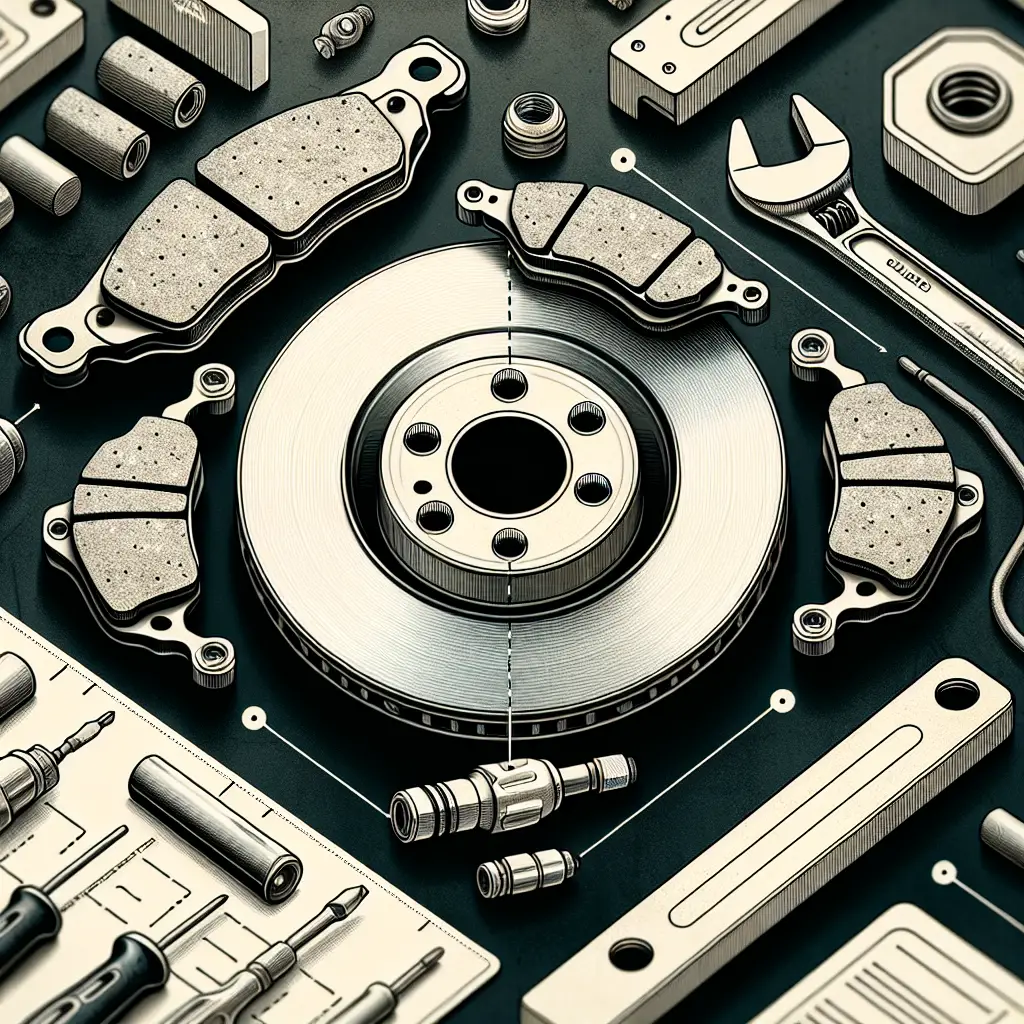Can I Use Ceramic Brake Pads on Regular Rotors?
When it comes to maintaining your vehicle, there are many choices to make in terms of parts and materials. One common question for vehicle owners is whether ceramic brake pads can be used with regular rotors. Ceramic brake pads have gained popularity for their performance and longevity, but it’s important to know whether they are compatible with your car’s current setup.
Understanding Brake Components
Before we dive into whether ceramic brake pads are suitable for regular rotors, let’s understand the components involved.
- Brake Pads: These are crucial to your vehicle’s braking system. They create the necessary friction to slow down or stop your car when they press against the rotors.
- Rotors (or Discs): These are the round plates that brake pads clamp down on to halt wheel spin and stop the vehicle.
What Are Ceramic Brake Pads?
Ceramic brake pads are made from dense ceramic material together with embedded copper fibers. This composition allows for better heat dissipation and less brake dust compared to their metallic counterparts. The benefits of ceramic brake pads include a quieter operation, reduced wear on the rotor, and less dust on your wheels.
The Compatibility with Regular Rotors
Now to the heart of the matter: Can you pair ceramic brake pads with your existing rotors? The short answer is yes, in most cases. Ceramic brake pads are compatible with the majority of stock rotors. The ceramic materials are generally softer than metallic ones, which means they are less likely to damage the rotors.
However, there are some considerations you should keep in mind:
Heat Dissipation
Ceramic brake pads handle heat well but they don’t conduct it as effectively as metallic pads. Regular rotors dissipate the heat generated during braking and if they’re not able to handle the possibly higher temperatures that come with ceramic pads, their lifespan could be reduced.
Brake Performance
Switching to ceramic brake pads can alter the performance of your braking system. This change might be insignificant for daily drivers, but for those with performance vehicles or drivers who are used to a particular braking feel, it could be more noticeable.
Cost Efficiency
Ceramic brake pads tend to be more expensive than traditional metallic or organic brake pads. While they offer benefits, such as reducing brake dust and noise, you should consider whether these benefits are worth the extra cost for your situation.
Vehicle Manufacturer Recommendations
Always check your vehicle’s owner manual or consult with the manufacturer for recommended brake pad materials. Using pads that are deemed incompatible could affect your warranty and potentially the safety of your brakes.
Case Studies and References
When making changes to brake components, it’s wise to look for reliable sources and studies that highlight the performance and compatibility of different materials. You might want to consider research from the Motor Industry Research Association (MIRA) or data from the Brake Manufacturers Council.
Moreover, anecdotal evidence and discussions on automotive forums can offer insight into other drivers’ experiences with ceramic pads on regular rotors. Yet, it’s crucial to differentiate between anecdotal advice and professional recommendations.
Installation and Bedding-in
If you decide to go ahead with ceramic brake pads on regular rotors, ensuring proper installation is crucial. In addition, the bedding-in process, which is the period where you allow the pads to conform to the rotors, is vital to prevent squealing and to make sure the pads work effectively. You can find guides on proper installation and bedding-in on websites like Car and Driver or specialized forums for car enthusiasts.
Potential Downsides
While ceramic brake pads do offer benefits, there are potential downsides to consider:
- They can take longer to reach optimum operating temperature, which may slightly affect braking performance in cold weather.
- They may not perform as well in extreme driving conditions, like racing or very heavy towing, when compared to other high-performance brake pads designed specifically for these conditions.
Final Thoughts
In essence, yes, ceramic brake pads can be used on regular rotors, but it’s not a question of plug-and-play. You must consider several factors before making the switch. Remember that safety comes first, and it’s always best to choose materials and parts that adhere to your vehicle’s specifications and your driving needs.
It’s advisable to consult with a professional mechanic if you remain uncertain about making the switch. They can help understand the specifics of your vehicle’s braking system and whether ceramic pads are a suitable and safe choice.
Safety, compatibility, and cost are all key considerations that will guide you to make the best decision for your vehicle and your peace of mind. If you ultimately decide to switch to ceramic pads, make sure to monitor your brakes’ performance, particularly during the initial bedding-in period, to ensure everything is working as expected.
When it comes to vehicle maintenance, especially something as vital as the braking system, informed decisions made with consideration to all factors involved lead to safer and happier driving experiences.

